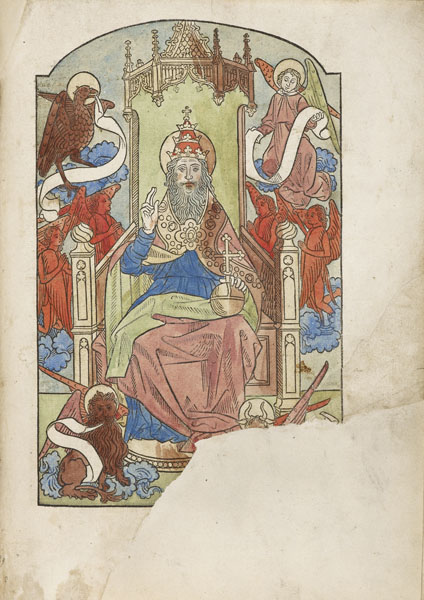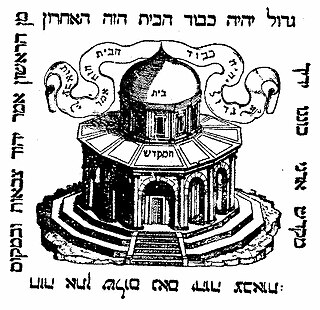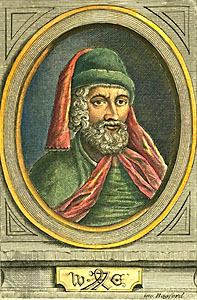
The Roman Missal is the liturgical book that contains the texts and rubrics for the celebration of the Mass in the Roman Rite of the Catholic Church.
The Mass of Saint Paul VI is the most commonly used form of the Mass in use today within the Catholic Church. It was first promulgated, after the Second Vatican Council (1962–65), by Pope Paul VI in 1969 and published in the 1970 edition of the Roman Missal, and was revised by Pope John Paul II in 2000. As thus revised, it "is and continues to be the normal Form – the Forma ordinaria" of the Roman Rite Mass, as intended for use in most contexts.

The Tridentine Mass, also known as Traditional Latin Mass, or Usus Antiquior, is the Roman Rite Mass which appears in typical editions of the Roman Missal published from 1570 to 1962. The most widely used Mass liturgy in the world from its issuance in 1570 until the introduction of the Mass of Paul VI in 1969, it is celebrated in ecclesiastical Latin.

Lyme Park is a large estate located south of Disley, Cheshire. The estate is managed by the National Trust and consists of a mansion house surrounded by formal gardens, in a deer park in the Peak District National Park. The house is the largest in Cheshire, and is recorded in the National Heritage List for England as a designated Grade I listed building.

Baron Newton, of Newton-in-Makerfield in the County Palatine of Lancaster, is a title in the Peerage of the United Kingdom. It was created in 1892 for the Conservative politician William Legh, who had earlier represented Lancashire South and Cheshire East in the House of Commons. Both his son, the second Baron, and his great-grandson, the fourth Baron, were Conservative government ministers. As of 2017 the title is held by the latter's eldest son, the fifth Baron, who succeeded in 1992.

The Anglican Use is an officially approved form of liturgy used by former members of the Anglican Communion who joined the Catholic Church while wishing to maintain the treasures of the Anglican tradition.
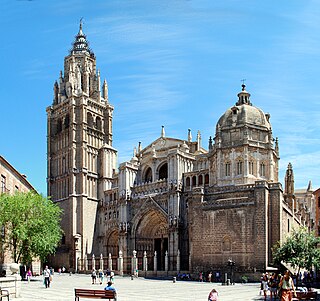
The Mozarabic Rite, also called the Visigothic Rite or the Hispanic Rite, is a liturgical rite of the Latin Church once used generally in the Iberian Peninsula (Hispania), in what is now Spain and Portugal. While the liturgy is often called 'Mozarabic' after the Christian communities that lived under Muslim rulers in Al-Andalus that preserved its use, the rite itself developed before and during the Visigothic period. After experiencing a period of decline during the Reconquista, when it was superseded by the Roman Rite in the Christian states of Iberia as part of a wider programme of liturgical standardization within the Catholic Church, efforts were taken in the 16th century to revive the rite and ensure its continued presence in the city of Toledo, where it is still performed today.
The Use of Sarum, also known as the Sarum Rite or Use of Salisbury, is a variant ("use") of the Roman Rite widely used for the ordering of Christian public worship, including the Mass and the Divine Office. It was established by Saint Osmund, Bishop of Salisbury, and Richard Poore in the 11th century and was originally the local form used in the Cathedral and Diocese of Salisbury, England.

The Diocese of Salisbury is a Church of England diocese in the south of England, within the ecclesiastical Province of Canterbury. The diocese covers most of Dorset, and most of Wiltshire. The diocese is led by the Bishop of Salisbury and the diocesan synod. The bishop's seat is at Salisbury Cathedral.
The Book of Divine Worship (BDW) was an adaptation of the American Book of Common Prayer (BCP) by the Roman Catholic Church. It was used primarily by former members of the Episcopal Church within Anglican Use parishes of the Pastoral Provision and the Personal Ordinariates. It has been replaced by a new book to be used worldwide, titled Divine Worship: The Missal.
The Use of York, was a variant of the Roman Rite practised in part of northern England, prior to the reign of Henry VIII. During Henry's reign the Use of York was suppressed in favour of the Sarum rite, followed by the Book of Common Prayer. "Use" denotes the special liturgical customs which prevailed in a particular diocese or group of dioceses; it is one of the medieval English Uses, together with the Use of Sarum.

Pre-Tridentine Mass refers to the variants of the liturgical rite of Mass in Rome before 1570, when, with his bull Quo primum, Pope Pius V made the Roman Missal, as revised by him, obligatory throughout the Latin-Rite or Western Church, except for those places and congregations whose distinct rites could demonstrate an antiquity of two hundred years or more.

Latin liturgical rites, or Western liturgical rites, are Catholic liturgical rites employed by the Latin Church, the largest particular church sui iuris of the Roman Catholic Church, that originated in Europe where the Latin language once dominated. Its language is now known as Ecclesiastical Latin. The most used rite is the Roman Rite.

A liturgical book, or service book, is a book published by the authority of a church body that contains the text and directions for the liturgy of its official religious services.
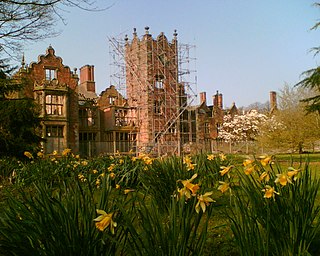
Bank Hall is a Jacobean mansion in Bretherton, Lancashire, England. It is a Grade II* listed building and is at the centre of a private estate, surrounded by parkland. The hall was built on the site of an older house in 1608 by the Banastres who were lords of the manor. The hall was extended during the 18th and 19th centuries. Extensions were built for George Anthony Legh Keck in 1832–1833, to the design of the architect George Webster.

The Leghs of Lyme were a gentry family seated at Lyme Park in Cheshire, England, from 1398 until 1946, when the stately home and its surrounding parkland were donated by the 3rd Lord Newton to The National Trust.

The Bowstones are a pair of Anglian cross shafts in Cheshire, England. Situated beside the old ridgeway between Disley and Macclesfield overlooking Lyme Park, the Cheshire Plain, the city of Manchester and the hills of the Peak District, they are a scheduled monument.
Order of Mass is an outline of a Mass celebration, describing how and in what order liturgical texts and rituals are employed to constitute a Mass.
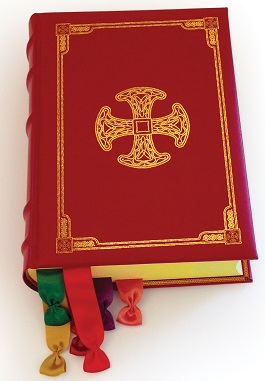
Divine Worship: The Missal (DW:™️) is the liturgical book containing the instructions and texts for the celebration of Mass by the former Anglicans within the Roman Catholic Church in the three personal ordinariates of Great Britain, United States and Canada, and Australia. The rite contained in this missal is a variant of the Roman Rite eucharistic liturgy. It was approved for use beginning on the first Sunday of Advent, November 29, 2015.
